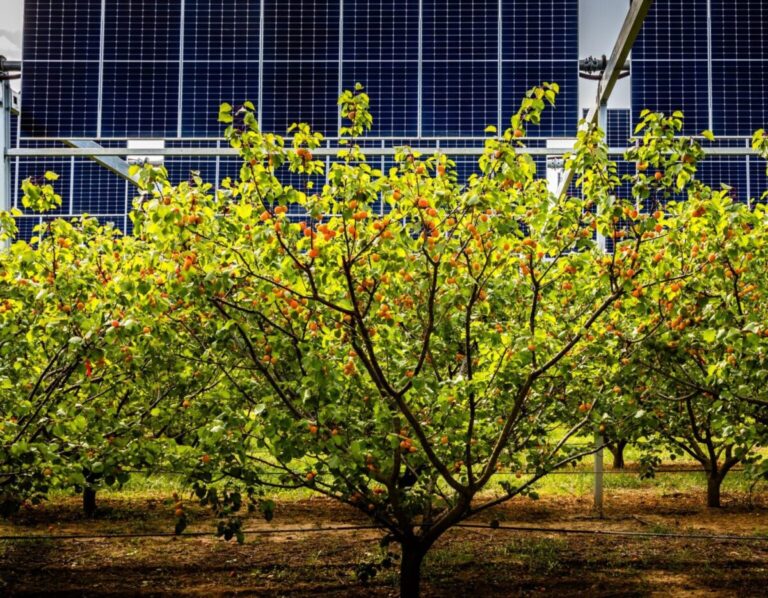French developer Solveo Energies has developed a 247 kW agrivoltaic installation spread over 3,500 m2. The system features trackers powered by the Cultiveo Dynamique algorithm, to protect an apricot farm in Pyrénées-Orientales, France.
Solveo Energies has inaugurated an agrivoltaic demonstration project in Rivesaltes, in Pyrénées-Orientales, in south-west France. The 247 W system is deployed on 3,500 m2 of land. The farm, like everywhere in the region, is experiencing drought and must adapt to climate change.
Solveo Energies has equipped the system with the Cultiveo Dynamic algorithm, which allows microclimatic regulation by preferring shade or light, depending on the agronomic needs of the orchard. It uses various sensors installed under the structure to monitor the climatic environment and tree activity in real time.
“We prioritize agriculture, with light sharing designed and managed to maintain or even improve agricultural production conditions in the event of an intense climatic episode,” said Pierre Guerrier, deputy general manager of development of Solveo Energies. “This effort leads us to adapt the conditions for the production of photovoltaic energy, through lower density and greater height of the panels or by limiting their slope.”
Clémentine Jardon, agricultural engineer at Solveo Energies, will monitor the growth and productivity of apricot trees under the supervision of the National Institute of Agronomic Research (INRAE) and the Center for International Cooperation in Agricultural Research for Development (CIRAD). The data collected in Rivesaltes will also be passed on to the National Center for Agricultural Research.
“A few years ago, a heat wave caused us to lose part of the orchard,” says Pierre Pratx, another grower who also has the Cultiveo Dynamique system on his crops. “With these panels we can now protect the apricots against such extreme temperatures. We will be able to control the rotation of the panels as needed by opening them further for more sun or closing them for more shade. We have similar trees in the area so we can make a comparison.”
This content is copyrighted and may not be reused. If you would like to collaborate with us and reuse some of our content, please contact: editors@pv-magazine.com.


